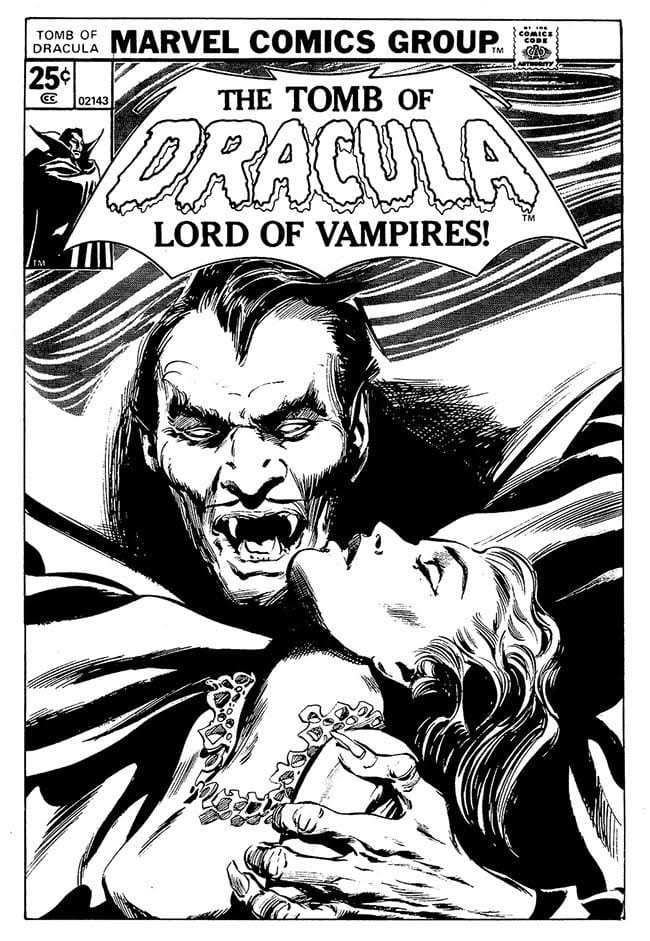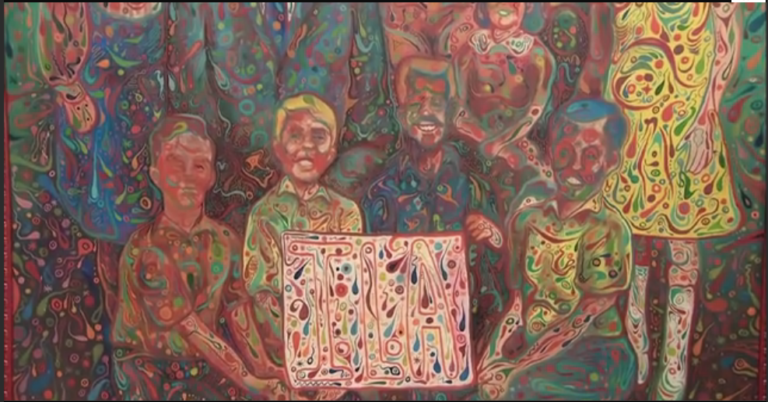That's right, I'm back, and the best thing about the Frankfurt experience is the brisket with that fine fine green sauce. And the veal. Not to mention the beer. The nice, easy beer. Oh sure I saw some books, too, but who needs books? I saw a nice Edgar Jacobs sketchbook collection, which is one of those kinds of books I used to buy but just can't anymore. Then again, it is nice seeing that insane precision in pencil form. Of course. Otherwise, gee, I dunno, I was holding down the DAP booth selling enormous quantities of books to Chinese wholesalers. Go figure.
Anyhow, here we are at Wednesday and Alex Dueben has brought us an interview with old school inker Tom Palmer, which gets into the kind of technique talk I so love.
You mentioned that Jack Kamen always inked with a brush. Were you using a brush to ink?
I inked with a dip pen, it was a Hunt 102 Crow Quill, and I used a Koh-i-noor Rapidograph pen, which had a one line thickness, to rule straight lines or ellipses with guides, a very mechanical line but needed in an advertising art studio. Used a brush to fill in black areas but never to strictly ink with, I would paint with a brush but never ink with one.
Jack was very particular about his Winsor & Newton Series 7 #2 brushes and once they lost a point he would pass them on to me. He would ink straight lines with a brush using a bridge he had bought. I was always fascinated how much he did with a brush.
As you said, Gene Colan penciled differently than a lot of other artists. The two of you worked together a lot over the years. Why do you think you worked so well together? What did you do with his pencils that others did not?
Gene Colan was the first comic book penciller I ever inked, and since I didn’t have anything to compare to, I did my best to interpret his gray tone artwork into line art. I would open up his shadows with crosshatching or zip-a-tone screens, something other than just black, Gene had a lot going on in his pencils especially the shadows, I just brought it out.
I'm a bit out of the loop, but near as I can tell the biggest news of the week is the official announcement of the New York Review of Books Comics line. I've known it was in the works for a while, and I'm pleased as punch that it's come to fruition with a strong, eclectic line-up of books and Gabriel Winslow-Yost is a strong comics critic in his own right. This is a fine new context and a nice way to start a different conversation about the medium. Here's the first season of books and, what the hell, here's the press release below.
| New York Review Books is pleased to announce New York Review Comics, a new series of books at the union of art and literature. Comics has been one of our liveliest art forms for over a century, but many of its greatest works are no longer available, or have never appeared in English. In the tradition of NYRB Classics, NYRC will present new editions and new translations of some of those overlooked gems—unique, powerful, and surprising books that will appeal both to longtime comics fans and to the newly curious. |
| NYRC will publish comics of all sorts, from intimate memoirs to absurdist gags, lyrical graphic novels to dizzying experiments, united in their affirmation of the strange and wonderful things that only comics can do. Some will be in paperback, some in hardcover, and trim sizes will vary.The series will begin on March 22, 2016 with Mark Beyer’s Agony, a darkly humorous depiction of urban despair originally published in 1987, now with an introduction by super-fan Colson Whitehead. This will be followed by the beautiful historical saga Peplum, by the acclaimed French cartoonist Blutch, in a new translation by Edward Gauvin (April 19); and Almost Completely Baxter, a judicious collection of new and selected work by the beloved, inimitably hilarious artist Glen Baxter (May 24). |
| It will continue in Fall 2016 with Soft City, a majestically surreal tour of an office dystopia by Norwegian pop artist Pushwagner, drawn and then lost in the early 1970s, with a new introduction by Chris Ware; Belgian artist Dominique Goblet’s searing experimental memoir Pretending Is Lying, translated from the French by Sophie Yanow—Goblet’s first book to appear in English; and What Am I Doing Here?, a long out-of-print collection by postwar America’s forgotten master of the existential gag, Abner Dean.NYRC is co-edited by Gabriel Winslow-Yost, an assistant editor at The New York Review of Books who has written on comics, video games, and other subjects for The New York Review, The New Yorker, and n+1, and Lucas Adams, a cartoonist who has drawn for The Believer, Mental Floss, The Toast, and Atlas Obscura, was recently named as one of Brooklyn Magazine’s “30 Under 30,” and is a former intern at New York Review Books. |
Got all that? Good.
Frank Santoro would have you know that his new book with Breakdown Press is available, in advance of publication, via his crowdfunder. Go forth!
Otherwise, tune in to this video by cartoonist Ben Jones:






